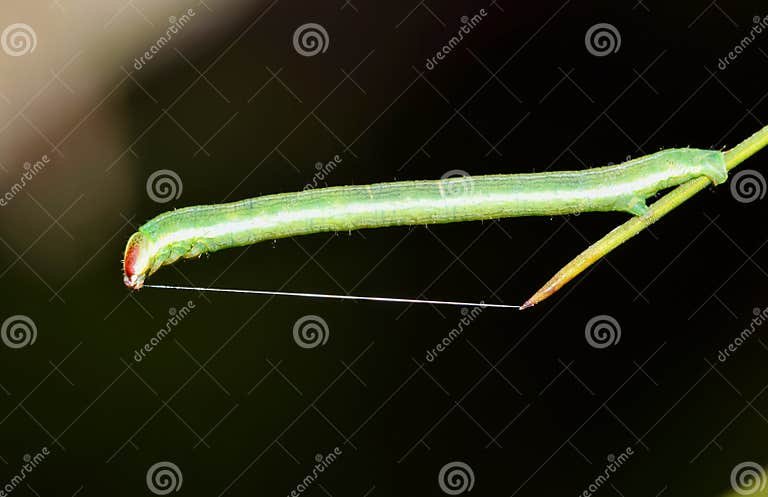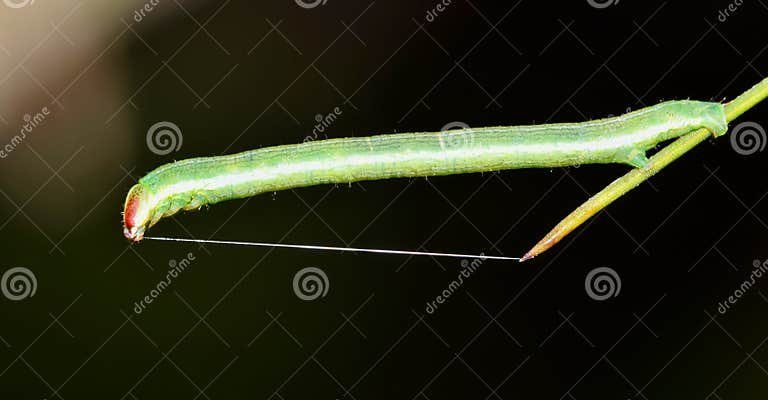
You might be wondering what silk has to do with inchworms. Isn’t that something only spiders do? Well, inchworms produce silk too, and they use it in pretty clever ways. Think of silk as a little safety harness, helping these inch-long creatures navigate their environment without the risk of falling. Their method of movement adds an interesting twist to how they survive and thrive in nature.
What Are Inchworms?
Inchworms are the larvae of certain moths, primarily from the family Geometridae. They’re often known by their characteristic way of moving: they curl and stretch their bodies, which gives them a unique inching motion. This can make them seem like they’re measuring their way across the leaves they inhabit, hence the name “inchworm.”
These little critters have a range of colors, from greens to browns, allowing them to blend into their surroundings. This camouflage is an essential survival tactic, helping them avoid predators while they munch on leaves. The inchworm’s small size and stealthy movement make them a delight to observe, but also a food source for birds and other animals.
One might wonder how they even become inchworms. The female moth lays eggs on leaves, and when the eggs hatch, tiny inchworms emerge. Their journey begins with a need for food and safety, and that’s where their silk threads come in handy.
The Role of Silk in Mobility
Silk threads serve multiple purposes for inchworms, especially when it comes to mobility. One important function is to help create a smooth path as they inch along. By releasing silk, an inchworm can anchor itself to a secure surface, reducing the risk of slipping off a branch.
Here’s how it works: when an inchworm wants to move, it first attaches its rear end to something stable using a silk thread. As it stretches its body forward, it effectively lowers the risk of tumbling off while it seeks its next point of attachment. It’s a bit like a tightrope walker using a safety harness.
Moreover, these silk threads can also help them climb vertically. Whether they’re scaling a tree or navigating thick vegetation, silk provides the grip they need to explore higher ground. This ability to move upwards opens up new feeding opportunities. It’s like getting the VIP pass to tasty leaves at the top of the tree.
How Do Inchworms Produce Silk?
Inchworms, like many other caterpillars, have specialized glands that produce silk proteins. When they’re ready to spin, they pull these proteins from their bodies and use their mouthparts to manipulate the silk, forming threads. The process is somewhat similar to how spiders create their webs, but the end goal here is all about mobility rather than catching prey.
The silk is incredibly strong and, surprisingly, quite flexible. Once it’s spun into threads, inchworms can use it for a variety of purposes, from mobility to constructing temporary shelters. You might say they’ve got a versatile toolkit at their disposal!
Another interesting aspect is that the silk can also help inchworms communicate with each other. Some species will use silk threads to mark their territory or to signal readiness to mate. So, while they’re not singing a love song, their silk does a lot of the talking!
Why Is This Silk Thread Important for Survival?
The ability to use silk threads for mobility is a game-changer in the life of an inchworm. In the wild, survival isn’t just about finding food; it’s also about avoiding being someone else’s meal. By using silk, inchworms can navigate complex environments while minimizing the risk of predators.
Additionally, silk helps them escape sticky situations. If an inchworm finds itself in a precarious spot, like the edge of a leaf, it can quickly drop or climb back up using its silk. This quick-thinking ability can mean the difference between life and death, especially when faced with hungry birds or other predators.
Inchworms are not just moving; they’re cleverly adapting to their environment. They can traverse various landscapes, from lush gardens to dense forests, all while staying safe. It’s a skill that’s been honed over time, ensuring they continue their metamorphosis into beautiful moths.
Comparing Inchworms to Other Silk Producers
When it comes to silk producers in the animal kingdom, a lot of people think about spiders, but inchworms are part of a different group. Spiders weave intricate webs primarily for hunting, while inchworms use silk mainly for movement and safety.
Silk from silkworms, on the other hand, is used in a completely different commercial way. Silkworms are cultivated to produce silk threads for clothing and textiles, while inchworms take advantage of silk for mobility in their natural habitats. Both types of silk have unique characteristics, but their purposes differ vastly.
Inchworm silk is more about survival, while silk from silkworms is focused on human use. It’s fascinating how different creatures adapt the same resource for various needs. Like a tailor and a tightrope walker using the same spool of thread but for entirely different projects.
Inchworms may seem small and simple, but their use of silk threads for mobility is a brilliant example of nature’s ingenuity. They expertly combine their unique movements with silk to navigate their environment, helping them stay safe while foraging for food.
This tiny creature’s journey isn’t just about survival; it’s a captivating story of adaptation and cleverness. Next time you see an inchworm inching its way along a branch, take a moment to appreciate the incredible life it leads—using silk threads in a way that reflects both resilience and grace. Nature truly is remarkable, and inchworms remind us just how adaptive and resourceful living beings can be.

